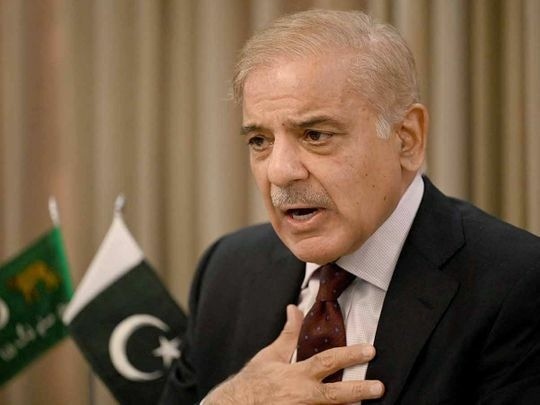
On July 12, Pakistan secured a staff-level agreement for a record 24th time with the International Monetary Fund (IMF). The agreed amount of the new financial bailout is USD 7 billion for a period of 37 months. The deal was announced just two weeks after Pakistan approved a ‘tax-laden’ budget for the 2024-25 fiscal year with the IMF’s approval. The new agreement introduced increased taxes on agricultural incomes, highlighting the need to boost government revenue and reduce the recurrent deficit to secure the lender’s approval. Analysts are critical of the new bailout, as it adds an extra debt burden on Pakistan and reflects growing economic unpredictability in the country.
More importantly, the last two IMF bailouts failed to stabilize Pakistan’s economy. Inflation in Pakistan was close to 30 percent in FY23 and 23.4 percent in FY24, reportedly the highest in Asia. Additionally, the country faces roughly USD 25 billion in external debt payments in the current fiscal year, a significantly higher amount than its current foreign exchange reserves of around USD 9 billion. According to a tweet from a leading economic commentator in Pakistan, “Pakistan owes about USD 8.4 billion to the IMF, to be repaid over the next 3-4 years. The bailout package of USD 7 billion is less than this amount. There is nothing to celebrate.”
Interestingly, the IMF warned in its last Staff Report that Pakistan’s path to debt sustainability was ‘narrow’ amid ‘acute,’ ‘exceptional,’ and ‘uncomfortably high’ risks from elevated gross financing needs and scarce external financing. Consequently, the impact of these additional external loans, given the acute risks to debt sustainability, could be disastrous for Pakistan. Some analysts predict unbearable austerity measures for the Pakistani people, who are already facing double-digit food inflation, a historic cost of living crisis, and endemic political crisis. Under these circumstances, the country is likely heading towards major internal rebellion against state institutions. The anticipated socio-political instability and street violence in Pakistan will further impede chances of economic improvement and may cause serious losses to external lenders.
According to the IMF, Pakistan owes an average of USD 19 billion in principal repayments each year for the next five years, which is more than half of its export revenues. Additionally, it will need a minimum of USD 6 billion annually to finance current account deficits, bringing total external financing needs to at least USD 25 billion per year between now and 2029. Pakistan’s total tax revenue is barely 10 percent of GDP. More worryingly for Pakistan, it cannot meet its external financing needs without incurring more government debt.
Analysts blame Pakistan’s structural failures for its inability to attract the necessary Foreign Direct Investment (FDI), which remains less than USD 2 billion annually, alongside the private sector’s failure to generate capital inflows from abroad. Even the much-hyped Special Investment Facilitation Council (SIFC), General Syed Asim Munir’s initiative to stabilize the economy by attracting FDI, has failed to secure meaningful investments from friendly countries. General Munir and the political leadership in Pakistan have yet to understand that the solution to the country’s ailing economy lies not in rapid external lending but in structural reforms to create a favourable business environment for foreign investors and companies. However, the increased involvement of the military establishment in the daily functioning of the government has jeopardized even the slightest chance of logical economic reforms in Pakistan.
While the political leadership in Pakistan celebrates the IMF approval of fresh loans, it is deliberately ignoring, or even concealing, the fact that the country will have to repay the Fund over USD 8 billion in the next four years. Furthermore, as one of the main conditions for the new loan, Pakistani authorities reportedly assured the IMF that they would bring taxation on agricultural incomes on par with corporate and other tax rates. This is a worrisome scenario for the middle- and lower-income classes in Pakistan. Historically, agricultural income in Pakistan has been taxed much lower than other sectors, despite contributing 23 percent to the GDP, employing 35 percent of the labour force, and generating an annual income of around USD 32.37 billion.
Sources indicate that under the new IMF deal, the highest effective tax rate could rise to as much as 45 percent from the current 15 percent, starting in 2025. These changes could contribute to inflation, particularly in food prices, affecting consumers nationwide and significantly risking the popularity of ruling parties among the rural voter base in Pakistan. With an unfriendly budget and a growing tussle between the government, military, and judiciary, the focus has once again shifted from the economy to politics in Pakistan. Even Beijing has not yet approved Islamabad’s request to restructure USD 28 billion in Chinese debt. China is Pakistan’s single largest creditor. About 28 per cent of Pakistan’s official debt is owed to China. The Chinese loans are more expensive and have shorter tenors compared to the loans extended by multilateral institutions such as the World Bank. According to the United Nations Trade and Development’s World of Debt Dashboard, Pakistan’s government spends 6 percent of its GDP on interest payments, more than any other developing country. Consequently, Pakistan has limited resources for social spending, placing it among the lowest in the world. Without focusing on improving microeconomic indicators such as upgrading the population’s skills or boosting job opportunities, Pakistan continuous to rely on new loans or debt waivers from friendly countries and the IMF to avoid default. Lastly, increasing political and security instability will further divert attention from economic reforms, limiting the benefits of the new IMF loan.






